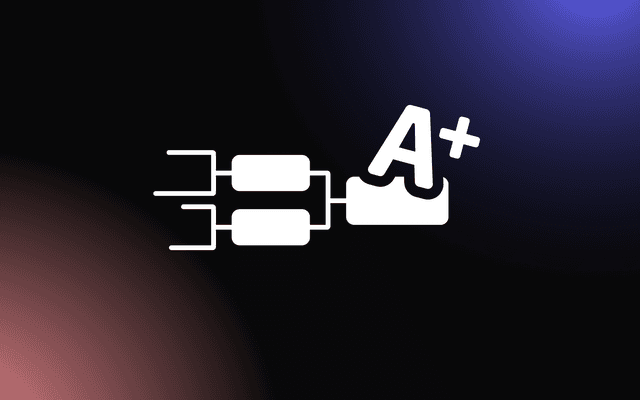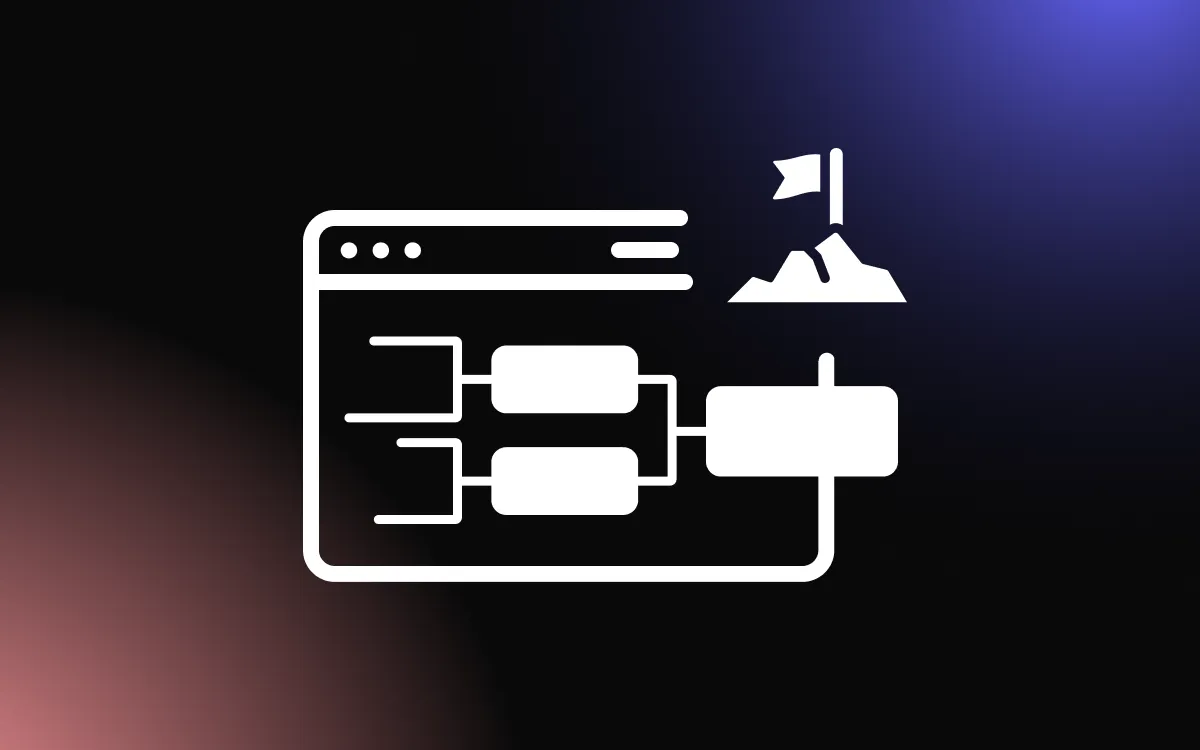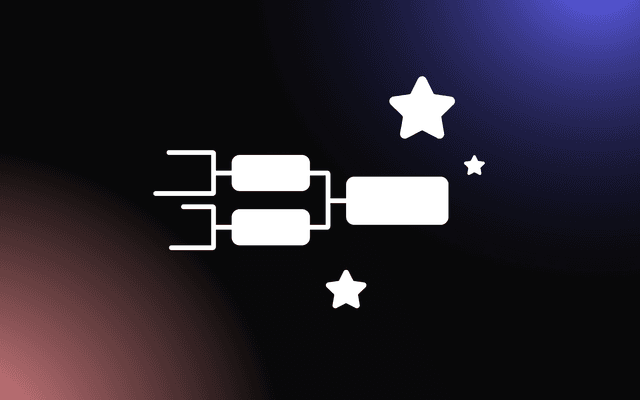
Designing the perfect bracket for a tournament is a blend of art and science, requiring careful consideration of various elements to ensure fairness, excitement, and engagement.
Whether it's for a sports event, an esports competition, or any other bracket-based contest, the structure and layout of your bracket can significantly impact the overall experience. This article will break down the anatomy of a perfect bracket, highlighting key elements that organizers should consider.
From seeding methods and tournament format to user experience and visual design, we'll explore the components that contribute to creating an effective and enjoyable tournament bracket.
Understanding the Basics of Bracket Design
The Structure of a Tournament Bracket
Tournament brackets are a systematic way of organizing competition flow, ensuring a clear path to determining a winner. The structure of a bracket depends on the type of tournament being conducted.
- Single-Elimination Brackets: The most straightforward structure, where a loss results in immediate elimination. The winner moves on to the next round until a champion is determined.
- Double-Elimination Brackets: This format offers a second chance, where participants need to lose twice before being eliminated. It includes a winners' bracket and a losers' bracket, converging to determine the final champion.
- Round-Robin Brackets: In this format, each participant plays against every other participant. It's commonly used when the emphasis is on playing multiple games rather than on elimination.
Essential Components of a Bracket
A well-designed bracket includes several key components:
- Seeding: This involves ranking the participants based on their skill level or performance history to ensure balanced matchups, especially in the initial rounds.
- Matchup Listings: Clearly defined pairings or matchups for each round, indicating who competes against whom.
- Progression Flow: A visual representation of how competitors move through the rounds, typically displayed in a tree diagram for elimination brackets.
- Location and Time: Details of where and when each matchup will take place, crucial for logistical planning and audience information.
- Results Space: Space to record scores or outcomes of each matchup, essential for tracking progress and updating the bracket.
- Finals Indicator: A clear indication of the final round or championship matchup, often highlighted or set apart for emphasis.
Balancing Fairness and Competition
Importance of Seeding and Matchmaking
In any competitive environment, striking a balance between fairness and competition is crucial. Seeding and matchmaking play pivotal roles in this process.
- Seeding: This involves ranking participants based on their past performance, skill level, or other relevant criteria. Proper seeding ensures that the strongest competitors don't face off in the early rounds, maintaining competitive interest throughout the tournament.
- Objective Criteria: Use transparent and objective criteria for seeding to avoid perceptions of bias. This could include rankings, win-loss records, or performance metrics.
- Matchmaking Algorithms: In digital or larger-scale tournaments, sophisticated matchmaking algorithms can be used to pair competitors, considering factors like skill levels, geographical location, and past performance.
Strategies to Ensure Competitive Balance
Ensuring a competitive balance involves several strategies that cater to fairness while maintaining the excitement of competition.
- Round-Robin Phases: Incorporating a round-robin phase before elimination rounds can ensure that all participants have ample opportunity to showcase their skills and aren't eliminated due to one poor performance.
- Handicap Systems: In some sports or games, handicap systems can level the playing field, giving less experienced competitors a fair chance against more seasoned ones.
- Dynamic Seeding: Update seeding dynamically based on ongoing performance within a season or series. This approach keeps the competition fresh and accounts for rising talents or fluctuating performances.
- Feedback and Adjustment: Regularly gather feedback from participants and adjust your approach to seeding and matchmaking accordingly. This can help in fine-tuning the balance between fairness and competition.
- Transparent Communication: Clearly communicate the rationale behind seeding and matchmaking decisions. Transparency helps in building trust and understanding among participants.
- Diverse Competition Formats: Consider using a mix of competition formats, such as head-to-head, team-based, or time-trial formats, depending on the nature of the sport or game. This variety can cater to different strengths and skills, making the competition more inclusive and balanced.
Visual Design and User Experience
Aesthetics and Clarity in Bracket Layout
The visual design of a tournament bracket is not just about aesthetics; it's about clarity and ease of understanding for everyone involved.
- Intuitive Layout: The bracket should have a clear, logical flow that is easy to follow. This means arranging matchups and rounds in a way that makes the progression of the tournament immediately apparent.
- Consistent Visual Elements: Use consistent colors, fonts, and styles to represent different stages of the tournament, teams, or players. This consistency aids in quick recognition and understanding.
- Minimalist Design: Avoid clutter. A clean, minimalist design helps in highlighting the essential information without overwhelming the viewer.
- High Contrast: Ensure high contrast between text and background to improve readability, especially important in digital formats or printed materials viewed in various lighting conditions.
Enhancing Usability for Participants and Spectators
A well-designed bracket not only looks good but also enhances the experience of participants and spectators.
- Interactive Features: For digital brackets, incorporate interactive elements like hover-over details, clickable links to player profiles or team statistics, and live updates.
- Responsive Design: Ensure that digital brackets are responsive and easily navigable on various devices, including smartphones and tablets. This is crucial for participants and spectators who might access the information on the go.
- Accessibility: Design with accessibility in mind. Use alt text for images, screen-reader-friendly layouts, and consider colorblind-friendly palettes.
- Real-Time Updates: In digital formats, integrate real-time updates so that participants and spectators can track progress live. This feature adds to the excitement and engagement of the tournament.
- Clear Signposting: Use clear signposting for important information such as dates, times, locations for matches, and progression rules. This information should be easy to find and understand.
- Feedback Loop: Provide a way for users to give feedback on the usability and design of the bracket. This can be particularly valuable for making iterative improvements.
Incorporating Flexibility and Adaptability
Designing for Unexpected Changes
In tournament organization, the ability to adapt to unforeseen circumstances is crucial. Here’s how to design brackets with flexibility in mind:
- Modular Design: Create a bracket system that can easily accommodate changes, such as the addition or removal of participants. A modular design allows for adjustments without disrupting the entire structure.
- Contingency Plans: Have contingency plans for common issues like participant dropouts or scheduling conflicts. This might include having reserve teams or flexible scheduling options.
- Dynamic Updating: For digital brackets, ensure the system can dynamically update to reflect changes in real-time. This keeps participants and spectators informed and maintains the integrity of the tournament.
- Clear Communication Channels: Establish efficient communication channels to quickly disseminate information about changes to all stakeholders.
Adjusting Brackets for Different Tournament Sizes
Different tournament sizes require different bracket structures. Flexibility in design accommodates these variations:
- Scalable Structures: Design brackets that are scalable, meaning they can expand or contract based on the number of participants. This could involve having predefined templates for different sizes.
- Round-Robin for Smaller Groups: For smaller tournaments, a round-robin format can ensure that all participants have ample playtime and opportunities to compete.
- Seeding Adjustments: In larger tournaments, seeding becomes more critical. Ensure your bracket design can accommodate various seeding formats and criteria.
- Multiple Brackets for Large Tournaments: For very large tournaments, consider dividing participants into multiple brackets or pools. This can manage the number of games more effectively and keep the tournament manageable.
- Wildcard Entries: Incorporate wildcard entries or play-in games to add an element of surprise and opportunity, especially in larger tournaments.
- Participant Feedback: Consider participant preferences and feedback when designing the bracket. Flexibility to adjust based on participant input can enhance the overall experience.
The Role of Technology in Bracket Creation
The Best Tool For Bracket Creation and Management

The Bracket Maker by Common Ninja is the premier tool for bracket creation and management. Tailored for a wide range of events, from sports tournaments to gaming competitions, this platform stands out for its versatility and user-friendliness. It supports various bracket types, including single elimination, double elimination, and custom formats, making it adaptable to different tournament structures.
The Bracket Maker's intuitive interface simplifies the process of setting up and customizing brackets, ensuring a smooth experience for organizers. Its interactive features, such as voting and predictions, actively engage participants and audiences, adding an extra layer of excitement to the competition. The platform also offers extensive customization options, allowing users to personalize their brackets to match the event's theme and style. With its responsive design, the brackets are accessible and visually appealing on all devices, enhancing the overall user experience. For anyone seeking a comprehensive, efficient, and engaging tool for bracket creation and management, the Bracket Maker by Common Ninja is the ideal choice.
Leveraging Real-Time Updates and Interactive Features
The use of technology in bracket creation also extends to real-time updates and interactive elements, enhancing the experience for all involved.
- Live Updates: Technology enables live updating of brackets as matches conclude, which is crucial for maintaining an accurate and current view of the tournament's progress.
- Interactive Elements: Digital brackets can include interactive features like clickable links to team profiles, match statistics, or live streams of the games.
- Participant Notifications: Automated notifications about upcoming matches, results, and changes in scheduling can be sent to participants, ensuring everyone is informed and engaged.
- Social Media Integration: Many digital bracket tools offer social media integration, allowing for easy sharing and discussion of the tournament on various platforms.
- Analytics and Reporting: Advanced systems provide analytics and reporting features, giving organizers insights into participation, engagement, and other key metrics.
- User Feedback and Engagement: Digital platforms can facilitate user feedback, allowing organizers to gather insights and engage with the audience more interactively.
Engaging Audience Through Interactive Elements
Adding Voting, Predictions, and Social Sharing
Interactive elements can significantly enhance audience engagement in tournaments or events. Here’s how to effectively incorporate these features:
- Voting Mechanisms: Introduce voting systems where audiences can vote for their favorite teams or predict match outcomes. This not only increases engagement but also gives a sense of participation in the event.
- Prediction Contests: Organize prediction contests where participants guess the winners of each round. Offer incentives or recognition for the most accurate predictions to spur participation.
- Social Sharing Options: Embed social sharing buttons that allow users to share their brackets, votes, or predictions on social media platforms. This not only increases engagement but also broadens the reach of the event.
- Real-Time Polls: Conduct real-time polls during live events or matches. This can be an effective way to gauge audience opinions and keep them involved.
Creating a Dynamic and Engaging Bracket Experience
To create a more dynamic and engaging experience for the audience, consider the following strategies:
- Live Updates and Notifications: Implement live updates of match results and bracket progress. Push notifications can alert users to recent changes and upcoming matches.
- Interactive Brackets: Design brackets that are interactive, allowing users to click through to detailed information about teams, players, or match histories.
- Gamification Elements: Introduce gamification elements like leaderboards, badges, or points for participation. This can add a competitive and fun aspect to the engagement.
- User-Generated Content: Encourage the creation of user-generated content, such as comments, photos, or videos related to the event. This can foster a sense of community among the audience.
- Mobile Accessibility: Ensure that all interactive elements are easily accessible on mobile devices, considering that many users will engage via smartphones or tablets.
- Feedback Loops: Provide mechanisms for audience feedback on the interactive experience. This can help in continuously improving the engagement strategy.
Legal and Ethical Considerations
Ensuring Compliance with Regulations
When organizing events or competitions, particularly those involving public participation, it's crucial to adhere to legal regulations to avoid potential liabilities.
- Understanding Local and International Laws: Be aware of the legal requirements in your jurisdiction, especially if the event has international participants. This includes understanding gambling laws if your event involves betting or predictions.
- Data Privacy and Protection: Ensure compliance with data protection laws like GDPR or CCPA. Be transparent about how participant data is collected, used, and protected.
- Intellectual Property Rights: Respect intellectual property rights, especially when using third-party content, logos, or trademarks in your brackets or promotional materials.
- Age Restrictions and Consent: Implement age verification processes if necessary and obtain appropriate consent, particularly when the event involves minors.
Maintaining Transparency and Fairness
Ethical considerations are equally important to foster trust and maintain the integrity of the event.
- Clear Rules and Guidelines: Provide clear, accessible rules and guidelines for participation. This includes criteria for winning, judging processes, or any disqualification criteria.
- Fair Play: Ensure that the event is conducted fairly, with no bias towards certain participants or teams. This might involve using impartial judges or transparent algorithms in digital events.
- Conflict of Interest: Avoid any conflicts of interest, and disclose any potential conflicts to maintain transparency.
- Accessibility: Make your event inclusive and accessible to people of all abilities. This includes providing necessary accommodations and ensuring that your digital platforms are accessible.
- Transparency in Decision-Making: Be transparent about how decisions are made, especially in subjective areas like judging or awarding prizes.
- Handling Complaints and Disputes: Establish a clear process for handling complaints and disputes. This should be fair, transparent, and timely.
Analyzing and Learning from Past Brackets
The Importance of Feedback and Data Analysis
Reflecting on past brackets is essential for improving future events. This involves a combination of feedback collection and data analysis.
- Participant Feedback: Gather feedback from participants regarding their experience. This can include aspects like the ease of understanding the bracket, the fairness of matchups, and the overall enjoyment of the event.
- Spectator Insights: Collect insights from spectators, especially if the event was broadcasted or shared publicly. Understand their perspectives on the engagement level and clarity of the bracket presentation.
- Data Analysis: Analyze data from the bracket, such as which matchups garnered the most interest, patterns in participant performance, and any anomalies or unexpected outcomes.
- Engagement Metrics: Look at engagement metrics if the bracket was hosted online. This includes page views, time spent on the bracket page, and social media interactions.
Continuous Improvement Based on Historical Performance
Using insights from past brackets can significantly enhance the planning and execution of future events.
- Identifying Trends: Look for trends in participant performance and audience interest. This can inform future seeding decisions and bracket structures.
- Refining the Format: Based on feedback and data, refine the tournament format. This might involve adjusting the number of rounds, the type of bracket used, or the scheduling of matchups.
- Enhancing User Experience: Implement changes to improve the user experience, such as a more intuitive bracket design, better accessibility features, or more engaging content around the bracket.
- Marketing and Promotion: Use insights from past brackets to inform your marketing and promotion strategies. Understand what aspects of the event resonated most with your audience and leverage those in future promotions.
- Technology Integration: If technology was used, assess its effectiveness and explore new tools or features that could enhance the bracket experience.
- Documenting Learnings: Keep a record of lessons learned and best practices. This documentation will be invaluable for planning future events and can serve as a guide for new team members.
Conclusion
Crafting the perfect bracket is a critical task that can greatly influence the success of a tournament. As we've discussed, several key elements must be carefully balanced, including the format, seeding, scheduling, and visual presentation.
A well-designed bracket not only ensures fairness and competitiveness but also enhances the overall experience for participants and spectators. By paying attention to these crucial aspects, organizers can create brackets that are not just functional but also engaging and memorable. In the end, the perfect bracket is one that captures the spirit of competition, fosters excitement, and leaves participants eagerly anticipating the next match.


